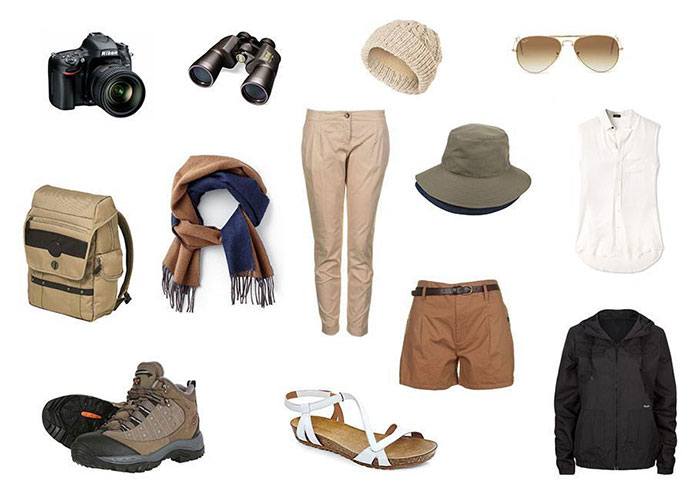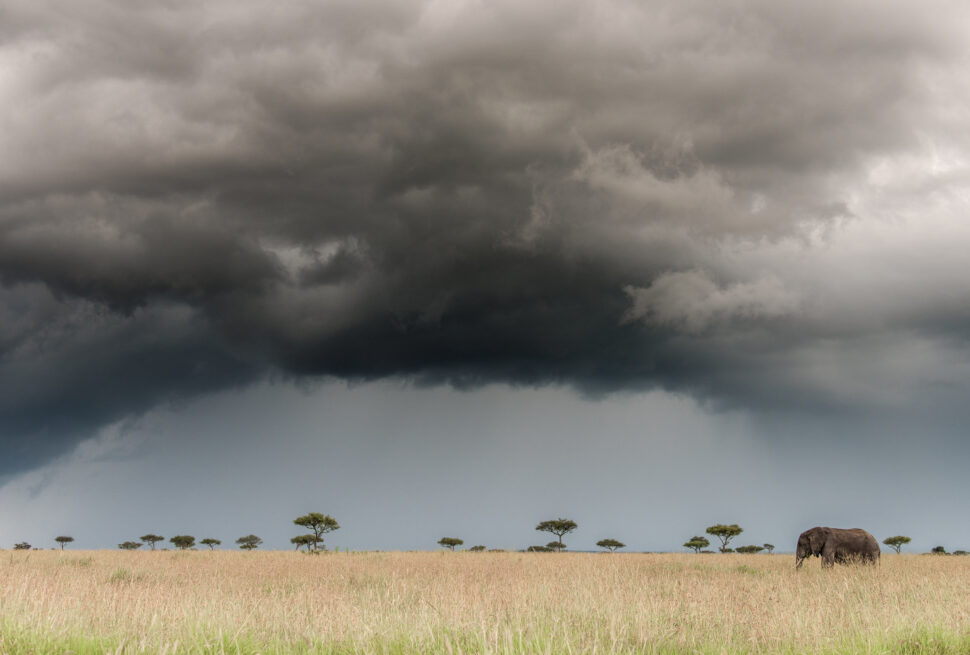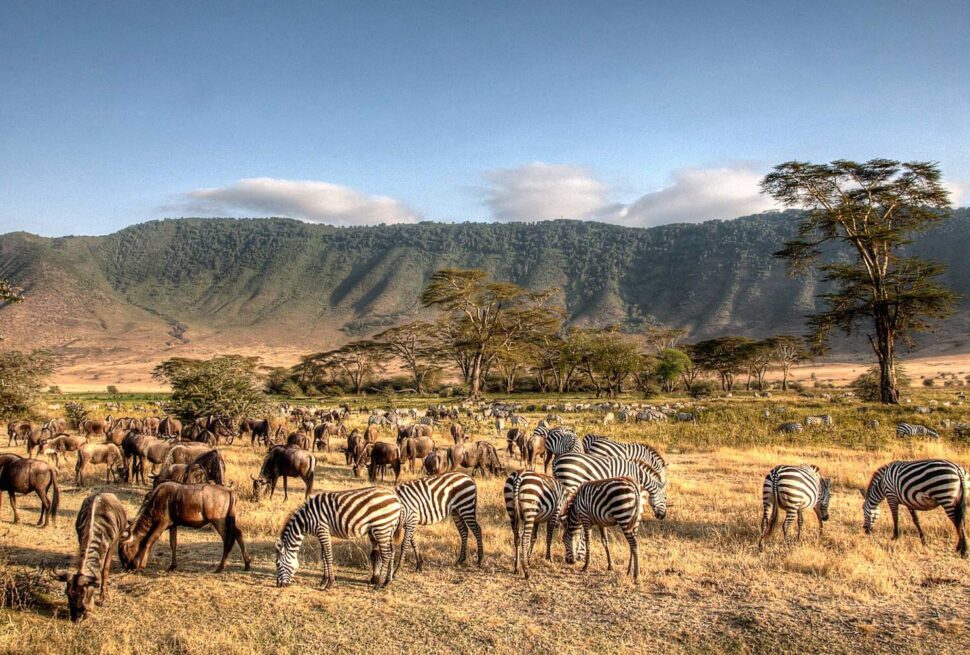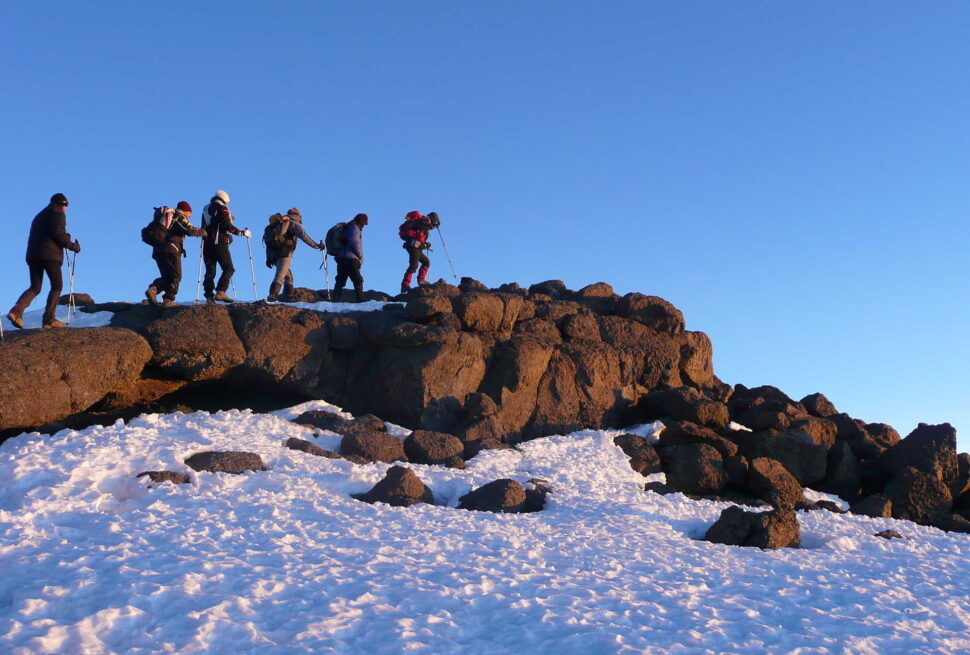Long hours in a safari vehicle and tiny chartered planes are common ways to get to your desired safari site. These planes have stringent weight limitations, and dragging hefty luggage around will rapidly become tiresome.
Our Tanzania safari packing list will ensure that you are properly prepared for this once-in-a-lifetime event as you plan your vacation.
Tanzania Weather: What to Expect
Before you start packing, think about when you want to go to Tanzania and when you want to go. While average temperatures do not vary significantly throughout the year, there is a distinct wet and dry season.
Dry Season
From mid-June through October is the greatest and most popular period to explore Tanzania. This is Tanzania’s dry season, which means the weather is more predictable and great for safaris.
While it may be cold in the mornings and nights, the weather throughout this season is pretty consistent. Temperatures are typically about 23°C/73°F, with highs of 28°C/82°F in coastal locations.
The Rainy Season
Tanzania barren landscapes are converted into a lush, green splendor during the rainy season. Temperatures rise throughout this time, often ranging from 24°C/75°F to 27°C/81°F, with highs of 30°C/86°F around the shore. In this season, there are two sorts of rainy periods:
Short rains (November-December): Thunderstorms are likely to occur in the afternoon.
Long rains (March-April): The long rains usher in the rainy season’s climax, which is characterized by hot and humid weather.
See our recommendations for the best times to visit Tanzania.
Checklist for Everyone
You just need a couple of each of the following goods, regardless of the length of your journey (discussed in more detail below). Most lodging choices offer washing facilities, and safari clothing is robust enough to withstand a tough hand wash if you’re camping.
Shoes and Clothing
Safari shirts with short and long sleeves for comfort.
Men and women can wear long rolled-up trousers.
Hiking boots or ankle-high trainers are simple, lightweight safari shoes.
Shorts
If you want to dress up at night, bring a dress or a stylish top.
lingerie (including sports bras for women)
Men’s and women’s windbreakers and rain jackets
Jackets that are warm or fleece jackets
Scarf
Swimsuit
Hat
Socks
Flip-flops
Daypacks and Bags
Duffle bag (80-90L)
Daypack (20-30L)
Organizers for travel bags (optional)
Accessories in general
Wipes for babies
Sunscreen
Repellent for insects
Medications in general (Imodium, Paracetamol)
Sunglasses
Bottle of reusable water
Technology
Camera
GoPro (optional)
Battery charger
Batteries and a memory card for the camera
Adapter for travel
Other Miscellaneous
Ziplock bags are ideal for storing valuables (passport, money, phone, etc.)
Yellow fever vaccination, passport, visa, and insurance (if applicable)
For your duffel bag, a little lock (essential)
Binoculars
Comfort, Layering, and More in Clothing
Comfort and color are the two terms that should come to mind while preparing for a safari. Clothing that is breathable and moisture-wicking is great for safaris and plays an important part in the layering process.
Most lodges do not have a dress code (most visitors head directly to dinner after an afternoon safari), so sophisticated clothing is a nice-to-have but not a requirement.
Safari Carry-On and Bag
A duffel bag and a daypack or safari carry on are the two sorts of bags you’ll need for your safari.
Bag duffel
When it comes to safari baggage, a soft duffel bag is more convenient to travel with than a hard suitcase. Duffel bags make the trip easier for everyone when everyone’s luggage is loaded into vehicles and crammed aboard small, chartered flights.
In general, a duffel bag with a capacity of more than 80 litres is the ideal option. Make sure it has a sturdy zipper mechanism that isn’t prone to breaking and can be locked effortlessly. Secure your bag with a simple lock. A hand and shoulder strapping system for further adaptability is another something to look for.
Consider investing on a set of packing cubes. These are not only useful for keeping your backpack organized, but they also help you save room.
Daypack for Safari
You’ll also need a daypack in addition to your duffel bag. All necessary (sunscreen, sunglasses, food, drink), personal (money, passport), or tiny breakable (camera, phone) goods should be kept in your daypack.
Repellent for Insects
Insect Shield – clothing that has been treated to bind permethrin into the fabric – is another approach to keep off unwelcome creepy crawlies besides picking the proper clothing color. Rather than needing to apply insect repellent, your clothing acts as an insect deterrent.
If you want to save money, you’ll need permethrin and a DEET-based repellent in your luggage.
Permethrin is a spray that can be obtained in most outdoor stores to treat your garments. Permethrin has the advantage of lasting through numerous washes – six washes or six weeks to be exact (whichever comes first).
A repellent containing deet is applied straight to your skin. Deet wipes make bug repelling a breeze and give convenient on-the-go protection.
Chargers and Adaptors
In most contemporary hotels, foreign adaptors and outlets are easily available, but this is not always the case on safari. A travel adapter that is appropriate for the country you are visiting is required. There are African-specific or universal travel adaptors that are worthwhile to purchase.
A heavy-duty power bank is also a must-have, especially if you intend on taking photographs and movies with your phone during your game drive or if you’re camping remotely.
Camera
While many tourists use their phones to document their safari adventures, nothing beats the quality of a decent camera. If you enjoy photography, the experience of photographing the animals you come across will be amazing. You’ll want to bring a 300mm or longer zoom lens for the finest photographs.
Binoculars
While binoculars are not required, having a decent set with you on your safari will undoubtedly enhance your experience.
When it comes to binoculars, it’s best to go all-in. The greatest binoculars will add weight to your baggage, but lesser binoculars will disappoint you.




